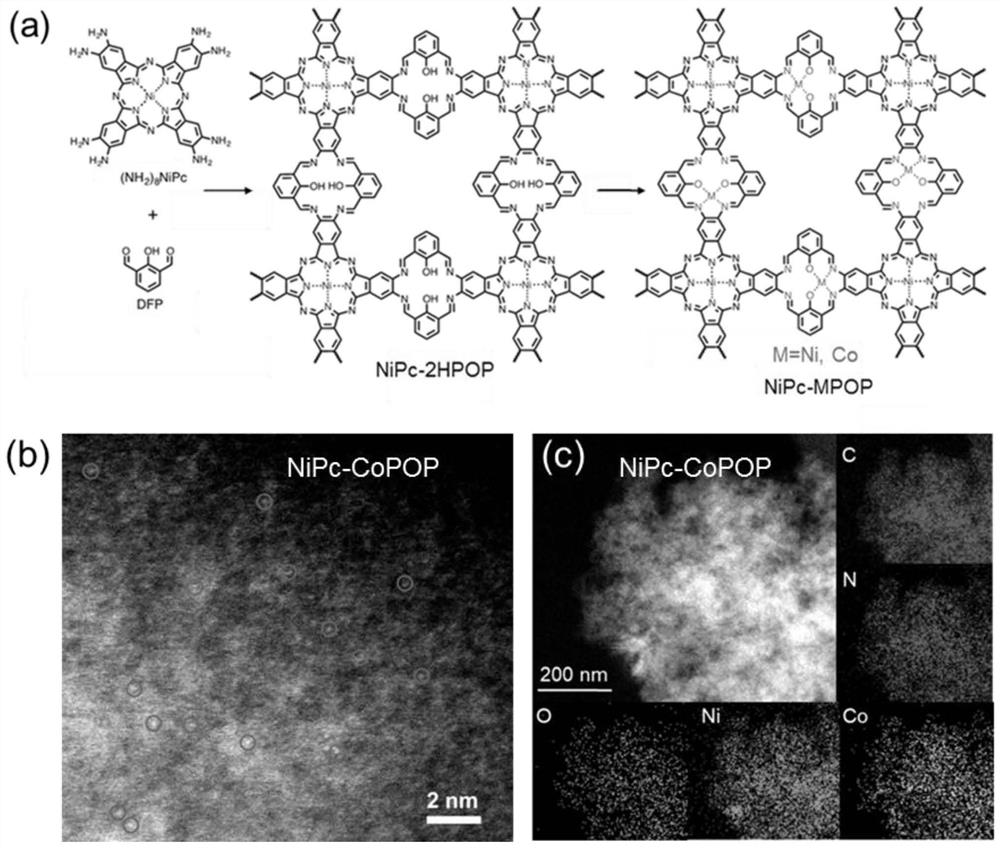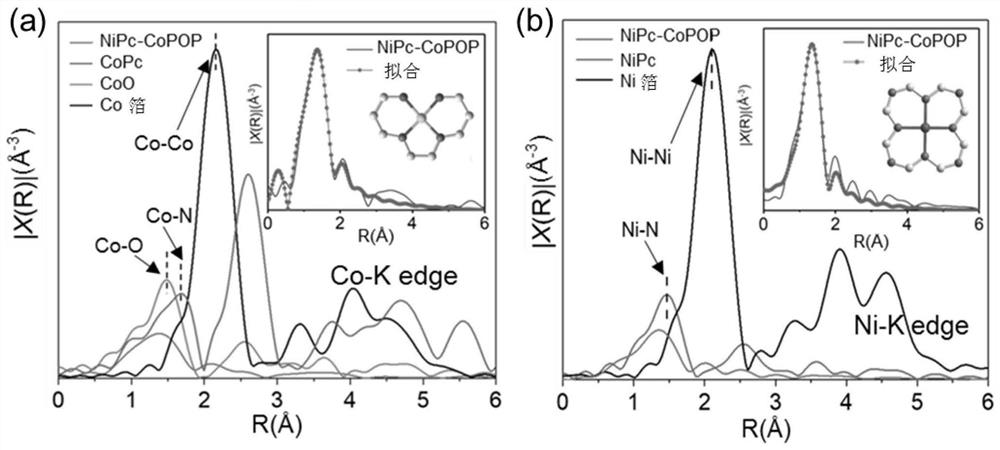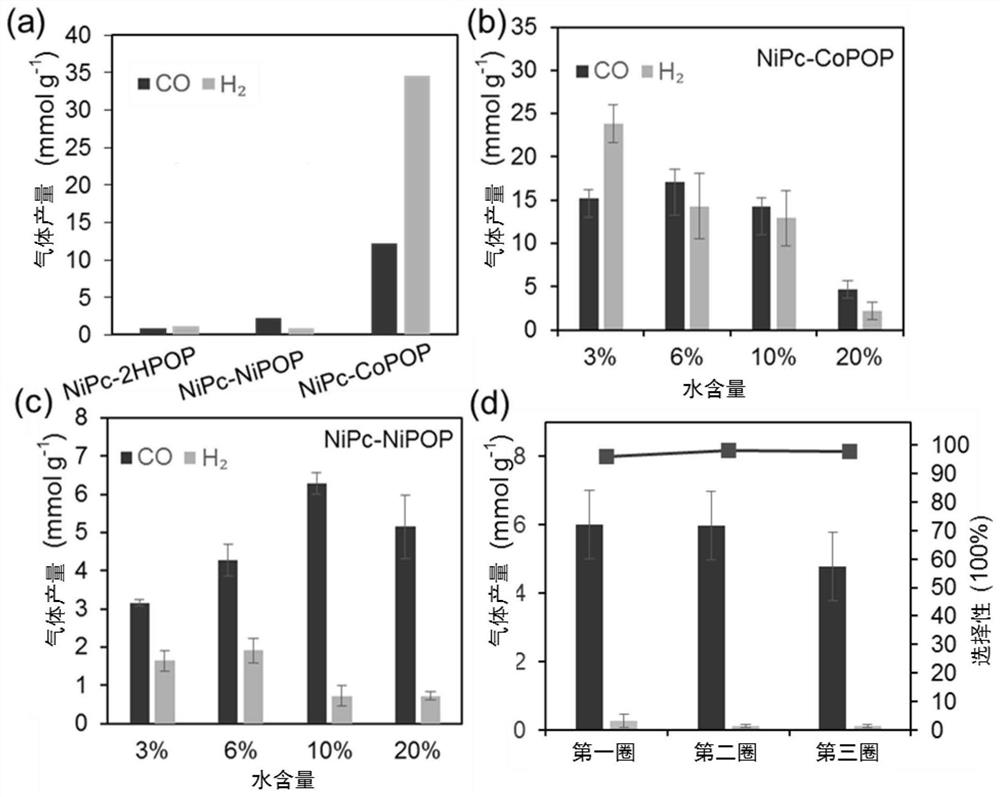Monatomic catalytic material NiPc-MPOP for high-efficiency photocatalytic reduction of carbon dioxide and preparation method thereof
A photocatalytic material, carbon dioxide technology, applied in the fields of carbon monoxide, chemical instruments and methods, catalytic reactions, etc., can solve the problems of uncontrollable catalytic site microenvironment, inability to fully explore the impact of SACs catalytic performance, and easy catalyst deactivation.
- Summary
- Abstract
- Description
- Claims
- Application Information
AI Technical Summary
Problems solved by technology
Method used
Image
Examples
Embodiment 1
[0023] Embodiment 1: Synthesis of NiPc-MPOP material of the present invention
[0024] 2,3,9,10,16,17,23,24-Nickel(II) octaaminophthalocyanine (13.8 mg, 0.02 mmol) and 2,6-diformylphenol (12 mg, 0.08 mmol) were added to N , in a mixed solvent of N-dimethylacetamide and mesitylene (v / v=3:2, 1 mL), the resulting mixture was sonicated for three minutes, and aniline (44 μL, 0.48 mmol) and 6.0 M aqueous acetic acid ( 0.2mL), sealed in a polytetrafluoroethylene reactor, and subjected to solvothermal reaction at 150°C for 7 days. After cooling to room temperature, the dark green single-center single-atom material NiPc-2HPOP was obtained by centrifugation, washing and drying. Add NiPc-2HPOP (100 mg) to Ni(OAc) 2 4H 2 O or Co(OAc) 2 4H 2 O in a saturated methanol solution (100 mL), stirred at room temperature for 3 days, centrifuged, washed, and dried to obtain dark green double-center single-atom material NiPc-NiPOP powder or NiPc-CoPOP powder. The material has good thermal stab...
Embodiment 2
[0032] Example 2: Photocatalytic CO by NiPc-MPOP 2 RR test
[0033] Photocatalytic CO 2 Reduction experiments were performed in 60 mL custom-made quartz reaction vials. According to a typical photocatalytic system, terpyridine ruthenium chloride ([Ru(bpy) 3 ] Cl 2 ), triethanolamine (TEOA) and the inventive material are used as photosensitizer, electron donor and catalyst, and accurately weighed photosensitizer (10mg), catalyst (2mg) are added in the reaction bottle. After adding 8 mL of acetonitrile and 2 mL of TEOA, the mouth of the reaction bottle was sealed with a silica gel stopper, and sealed again with a parafilm to ensure the airtightness of the reaction system. Ultrasonic the mixture for 3 to 5 minutes to disperse the components in the system evenly, and pass CO into the system for half an hour 2 gas to completely remove the air and make the CO 2 reaches saturation. White LED (400nm≤λ≤800nm) is used as light source for photocatalytic reaction. Absorb the upper...
PUM
 Login to View More
Login to View More Abstract
Description
Claims
Application Information
 Login to View More
Login to View More - R&D
- Intellectual Property
- Life Sciences
- Materials
- Tech Scout
- Unparalleled Data Quality
- Higher Quality Content
- 60% Fewer Hallucinations
Browse by: Latest US Patents, China's latest patents, Technical Efficacy Thesaurus, Application Domain, Technology Topic, Popular Technical Reports.
© 2025 PatSnap. All rights reserved.Legal|Privacy policy|Modern Slavery Act Transparency Statement|Sitemap|About US| Contact US: help@patsnap.com



